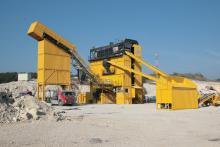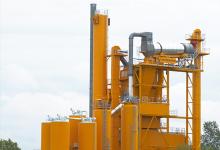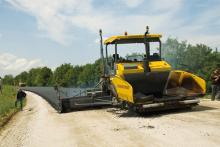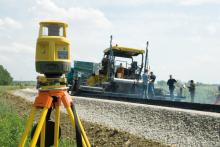
Before asphalt roads became the norm in Europe, travelling was a very dusty affair. ABE takes a look at Ammann's involvement in the development of paved roadways 100 years ago
Just over 100 years ago roads in Europe were often rutted, dusty and dirty and with the birth of the motorcar in Europe there came calls for better road surfaces to improve conditions.
In 1908 the first International Roadbuilding Congress was held in Paris, adding weight to the drive for road development. Speaking at the Paris conference, a Swiss physician from the Valais, Dr Guglielminetti told delegates about his breakthrough for the idea of using gasworks tar for dust-free roads. He too had a vision of a healthier future and told the conference, "I dream of thousands of kilometers of tarred roads running all round the earth, linking the countries and oceans together." Before he achieved recognition in Paris, he had tirelessly advanced the cause of tarred roads through lectures and experiments - he even acquired the humorous French nickname of "Dr Goudron" which translates as Dr Tar.
In the same year Guglielminetti completed what is believed to be the first section of machine laid road using a mix of viscous tar and gravel.
The year of 1908 was also when
Macadam Road
In addition to developing the first continuous ballast coating plant, Ammann also developed its own range of asphalt paving equipment but later stopped production to concentrate on mixing technology.
One of Ammann's early machines was powered by a 27hp Lister engine which operated at 1000rpm and had two forward and one reverse gear. The machine could surface variable widths between 2.4 and 3.6m and weighed in at 8tonnes.The first trials of material produced by the Ammann machine were carried out on Jurastrasse in the company's home town of Langenthal and for many years the road was more commonly called the Macadam Road.
However, Guglielminetti's roads were not the first asphalt carriageways, as several had been mixed and laid by hand - the Jungfernstieg in Hamburg, Germany was surfaced this way in 1839. Short sections of road in France, Austria and the US were built manually in the 19th century, but the cost and effort were enormous. The situation saw no significant improvement until the advent of mechanical asphalt processing in the 20th century.
Mineral pitch (natural asphalt) had been known as a binding agent and construction material for over 4000 years. Tar began its rise to prominence as a binding agent for road surfaces in about 1900. Bituminous base course mixes were introduced as oil refineries became more widespread in the mid-20th century - displacing tar, which was banned later on due to the carcinogens it contains.
By the late 1930s Switzerland had over 8000km of tarred roads but the aggregates for their construction had to be imported for the base course as locally sourced materials were not suitable. Aeberli started to research the binding of local aggregates into the tar so that they could be used and reduce the cost, and the result was named macadam roadbase after the Scots roadbuilder John McAdam.
Aeberli was also instrumental in developing techniques for keeping tar coated aggregates warm for as long as possible before laying, which helped to limited the potential health issues related to tar.
RSS












